July
Showing 157–168 of 200 results
-
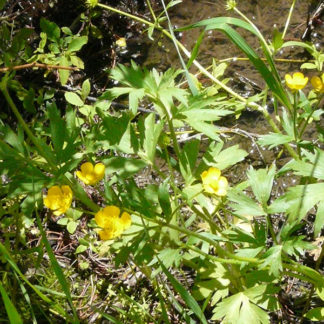
Ranunculus orthorhynchus / straightbeak buttercup
- 5 (to 8) bright, shiny yellow petals with long pedicels
- many stamens and pistils
- large, compound leaves with 3-5 pointy-lobed leaflets
- found in wet areas including irrigation ditches
-

Rhamphospermum arvense / Charlock
- yellow-flowered brassica; flowers larger than most mustards
- large-ish leaves with toothed margins
- erect stems; look for a reddish purple ring at stem junctions
- disturbed areas, road sides and waste places; prefers high nutrients
- 1" siliques point out or up, but not down
-
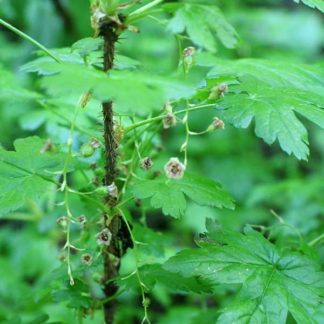
Ribes lacustre / prickly currant
- deeply lobed, maple-like leaves
- prickly stems with spines at nodes
- shrub to ca. 4 feet tall
- teeny cream & purple flowers in dangling clusters in spring
- red berries in late summer maturing to very small black berries
-
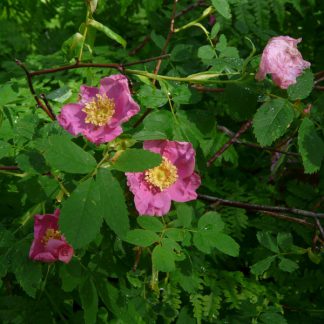
Rosa spp. / wild rose
- deep red (to pink) flowers; wonderfully fragrant
- understory shrub in wetter areas
- flowers mid-summer
-
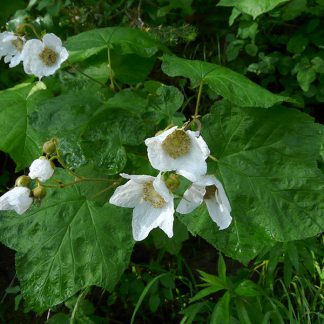
Rubus parviflorus / thimbleberry
- raspberry-like shrub usually in a clump
- white flowers with many stamens, up to 2.5 inches diameter
- large, fuzzy maple-like leaves
- blooms in spring; red, raspberry-like fruit in the fall
-

Rudbeckia occidentals / western coneflower
- dark cone-shaped flower head - like a sunflower without petals
- ring of yellow "bumps" visible during pollination time
- "cones" about 1" but double that when in seed.
- usually a tall plant with sunflower-like leaves
- alternate (not opposite) leaves
-
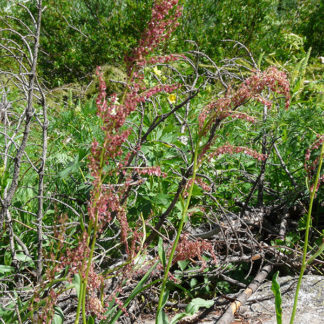
Rumex acetosella / sheep sorrel
- long, vertical inflorescences... not compact or well "organized"
- female plants with red/maroon flowers; males with green/white flowers
- especially visible when seeds are ripe... red
- basal rosette of arrowhead shaped leaves
- disturbed areas, wastelands, poor sites
-

Rumex crispus / curly dock
- rather large, lance-shaped leaves
- curly leaf margins, like crisped bacon or "crinkly-wavy"
- tall flowering stalks with many, many small yellow/green-ish flowers
- fruits are just like the flowers but deep red
- widespread and very much a weed
-
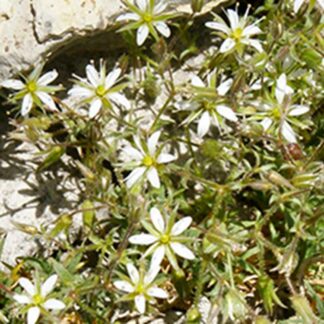
Sabulina nuttallii / Nuttall’s sandwort
- small, glandular-pubescent perennial
- trailing stems form mats
- thin, rigid, needle-like leaves, about ½" long
- small, white, 5-petaled flowers in terminal clusters
- 5 green, pointy sepals
- sagebrush hills to alpine slopes, and especially on gravelly benches or talus
-

Salix glauca / grayleaf willow
- very low-growing shrub at high altitude (alpine/subalpine)
- rounded to lance-shaped leaves; smooth below
- large-ish catkin inflorescences
-

Sambucus nigra / common elderberry
- shrub or small tree blooming in late spring
- leaves opposite
- pinnately compound with up to 9 leaflets with serrated edges
- flowers are white, 5-petaled, in flat-topped clusters of clusters
- "berries" are red or dark blue/black in August; often drooping when mature
-

Scrophularia lanceolate / lanceleaf figwort
- teeny, snapdragon-like flowers
- flowers urn-shaped, mostly yellow, with red or green at the tips
- flowers look like they aren't yet opened
- flowers on elongated panicle at the top of a tall-ish plant
- opposite leaves like stinging nettle without the stingers
- up to 5 feet tall in full sun/partial shade
Showing 157–168 of 200 results